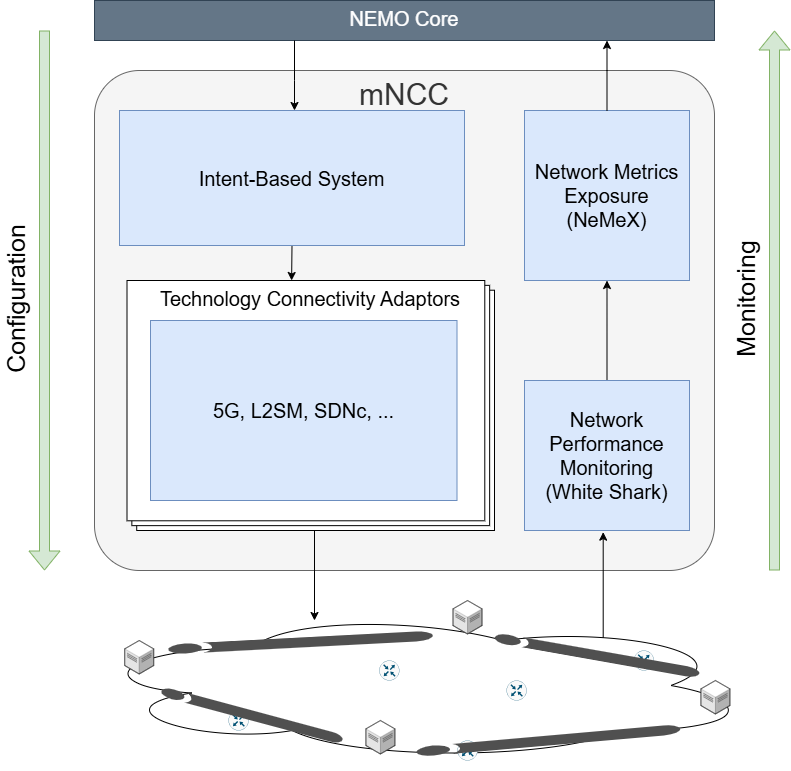What is mNCC and why is it important for the connectivity of the future?
In an increasingly connected world, where we work, play and communicate via the internet and mobile networks, the way we manage and control those connections becomes critical. This is where the mNCC, or meta-Network Cluster Controller, comes in, a key part of advanced projects such as NEMO, which aims to revolutionise network management in the future.
What does the mNCC do?
Imagine you have several offices, each with its own internet network, and you want them all to work together as if they were one, no matter where they are. The mNCC is like a “conductor” for these networks: it coordinates and controls how they connect to each other, ensuring that everything runs smoothly and efficiently.
Its main job is to unify the management of multiple networks (e.g. those of different companies, cities or even countries), allowing services and applications to run smoothly, no matter what technology or where they are deployed.
Why is this useful?
Simplifies management: Previously, each network was managed separately, which was complicated and time-consuming. The mNCC allows many networks to be controlled from one place.
Improves communication: It makes it easier for different devices and services (such as video calls, cloud applications or smart sensors) to communicate with each other, even if they are on different networks.
Increases security and efficiency: Having centralised control makes it easier to detect and fix problems, as well as protect networks from potential threats.
How does mNCC work in practice?
The mNCC does not work alone: it is part of a larger system called the meta-Operating System (meta-OS), which integrates other tools to monitor, analyse and automate networks. For example, the mNCC can receive a “command” (called an “attempt” or “intent”) to connect two offices and automatically configure everything necessary to make that connection work, even if the networks use different technologies.
In addition, the mNCC monitors network performance (such as speed or stability) and shares that information with other systems so that they can make intelligent decisions, such as moving data to the fastest network or detecting failures before they affect users.
Who is mNCC useful for?
Although mNCC is an advanced technology, its benefits reach all types of users:
Enterprises: To connect offices, factories or data centres securely and efficiently.
Telecommunications operators: To manage mobile networks, fibre optics or cloud services more intelligently.
Smart cities: To coordinate sensors, cameras and public services through a unified network.
Conclusion
The mNCC is a solution that allows multiple networks to be managed and connected as if they were one, simplifying administration, improving communication and making everything work more securely and efficiently. It is a building block for the future of connectivity, where collaboration between different technologies and locations will become increasingly important.

